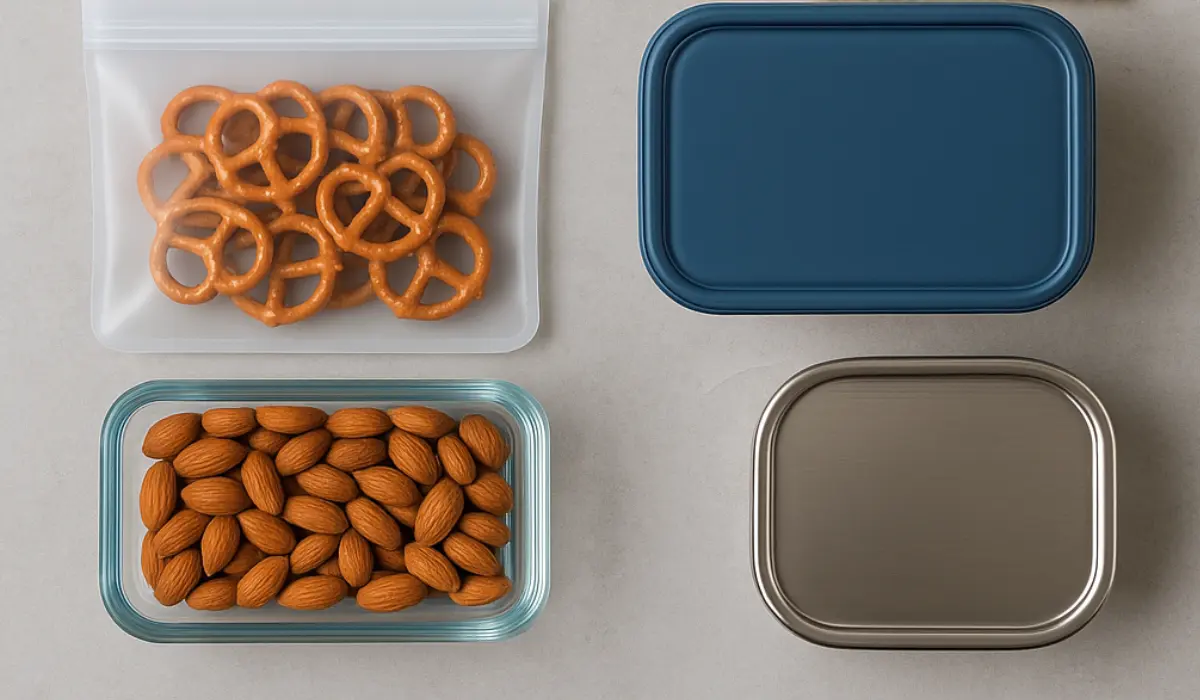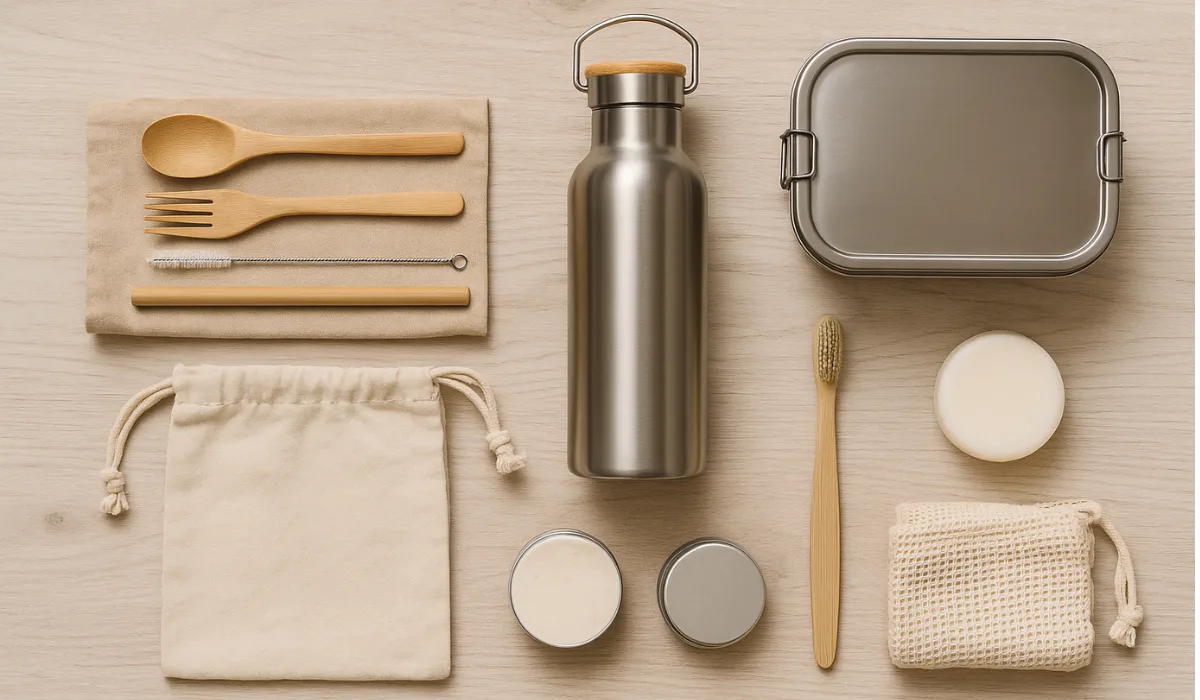Rethinking how we keep food is a vital first step in lowering plastic waste in the era of sustainability and conscious living. Though they greatly increase environmental pollution and possible health hazards from chemical leaching, plastic bags, containers, and wraps may appear handy. Fortunately, several useful and efficient substitutes can enable you to keep freshness, cut waste, and build a zero-waste kitchen.
This guide covers how to store food without plastic, offering expert tips, product recommendations, and long-term strategies for transitioning to a sustainable, eco-friendly kitchen.
Why Avoid Plastic for Food Storage?
Before diving into the solutions, it’s essential to understand the problems with plastic in the kitchen:
-
Environmental Impact: Over 300 million tons of plastic are produced annually, and only a small fraction is recycled. The rest ends up in landfills, oceans, and ecosystems.
-
Health Concerns: Plastics can leach harmful chemicals like BPA and phthalates into food, especially when heated or used with acidic ingredients.
-
Non-renewable Resource: Most plastic is derived from fossil fuels, contributing to carbon emissions and resource depletion.
By transitioning to non-plastic food storage solutions, you’re not only making a healthier choice for your family but also for the planet.
1. Glass Containers: The Gold Standard for Non-Toxic Storage
Best for: Leftovers, batch cooking, pantry staples, freezer storage
Glass containers are durable, non-toxic, and fully recyclable. They don’t absorb odors or stains and are safe for ovens, microwaves, and freezers.
Tips:
-
Choose containers with airtight bamboo or stainless-steel lids for a plastic-free option.
-
Use mason jars for dry goods, sauces, dressings, and even meal prepping.
Popular Brands: Pyrex, Weck Jars, Life Without Plastic
2. Beeswax Wraps: A Natural Alternative to Plastic Wrap
Best for: Wrapping sandwiches, cheese, cut fruits/vegetables, bread
Beeswax wraps are made from organic cotton infused with beeswax, jojoba oil, and tree resin. They’re breathable and moldable, making them perfect for keeping food fresh.
Tips:
-
Warm them slightly with your hands to seal around containers or directly on food.
-
Wash with cold water and mild soap to reuse for up to a year.
Vegan Alternative: Look for soy or candelilla wax versions if you prefer animal-free options.
3. Silicone Food Storage Bags: Reusable and Versatile
Best for: Freezing fruits, storing snacks, packing lunches, sous vide cooking
Silicone bags are an excellent replacement for single-use plastic bags. They are flexible, heat-resistant, and dishwasher-safe.
Tips:
-
Choose 100% food-grade silicone to avoid fillers.
-
Label with dry-erase markers for organizing freezer meals or leftovers.
Top Picks: Stasher Bags, ZipTop, Rezip
4. Stainless Steel Containers: Durable and Portable
Best for: School/work lunches, dry snacks, picnics, on-the-go meals
Stainless steel is non-reactive, BPA-free, and virtually indestructible. These containers come in various shapes and sizes and are excellent for reducing single-use packaging.
Tips:
-
Choose models with leakproof silicone seals for liquid items.
-
Use stackable designs to save space in the fridge or pantry.
Recommended Brands: ECOlunchbox, PlanetBox, LunchBots
5. Cloth Produce Bags and Bread Bags
Best for: Storing fresh produce, herbs, and baked goods
Ditch the plastic produce bags and opt for breathable cotton, linen, or mesh bags. They allow airflow and reduce spoilage caused by trapped moisture.
Tips:
-
Wrap fresh herbs in a damp cloth and store in the fridge.
-
Store bread in linen bags at room temperature to maintain the crust and prevent mold.
6. Ceramic and Enamel Containers
Best for: Storing leftovers, marinating, pantry organization
Ceramic and enamel containers add a touch of traditional charm and are excellent for storing both cooked and uncooked food.
Tips:
-
Use ceramic crocks for fermenting (e.g., kimchi or sauerkraut).
-
Avoid chipped enamel to prevent contamination.
7. Upcycled Glass Jars and Bottles
Best for: Dry goods, sauces, smoothies, dressings, overnight oats
Repurpose jars from pasta sauces, jams, or nut butters to store your own food at home. It’s a cost-effective and sustainable way to reduce waste.
Tips:
-
Sterilize jars before use, especially for canning.
-
Label clearly to avoid mystery items in the fridge.
8. Paper-Based Wrapping (Cautiously)
Best for: Wrapping sandwiches, lining bins, temporary food storage
Unwaxed butcher paper or parchment paper can serve as a short-term plastic-free wrapping solution, especially for dry foods.
Caution:
-
Paper isn’t reusable or compostable if it’s waxed or soiled with oils.
-
Use sparingly and combine with other long-term solutions.
Food Storage Tips for a Zero Waste Kitchen
1. Label Everything
Use chalk pens, masking tape, or reusable labels to mark contents and dates. This reduces waste from forgotten or expired food.
2. Embrace Batch Cooking
Plan meals and freeze portions in glass or silicone containers to cut down on food waste and save time.
3. Use Your Freezer Wisely
Freeze fresh produce, leftovers, and pre-chopped ingredients using silicone bags or mason jars (leave room for expansion).
4. Avoid Overbuying
Stick to a meal plan and buy only what you need to avoid spoilage and unnecessary packaging.
Transitioning to a Plastic-Free Food Storage System
Changing how you store food doesn’t have to happen overnight. Follow this gradual transition plan:
-
Audit Your Current System: Identify where plastic is used most (e.g., Ziplocs, cling wrap, Tupperware).
-
Replace as You Go: When plastic containers wear out, replace them with glass or stainless steel.
-
Start with the essentials: beeswax wraps, a few glass containers, and produce bags are great starting points.
-
Invest Strategically: Focus on durability and versatility to make each purchase last.
Final Thoughts: Small Changes, Big Impact
Storing food without plastic is more than a lifestyle trend—it’s a tangible action toward sustainability. With a little effort and the right tools, you can significantly reduce your plastic footprint while keeping your food fresh, safe, and beautifully organized.
By investing in reusable, non-toxic alternatives, you’re not only protecting your health and the environment but also embracing a more intentional, minimalist way of living. The zero-waste kitchen begins one container at a time.










